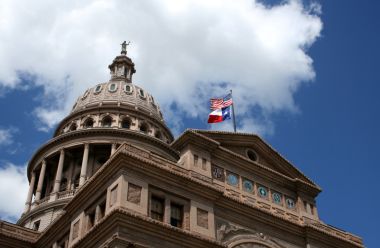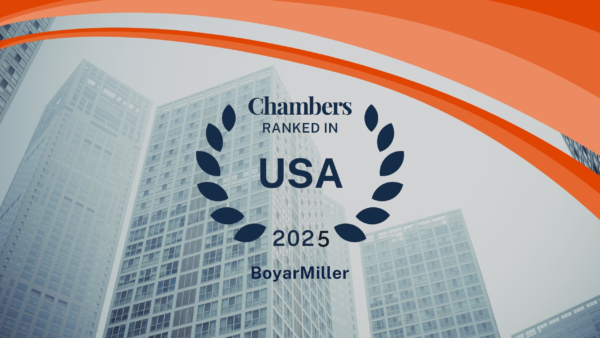With a deep understanding of your business alongside clear and honest communication, we help clients face challenges fearlessly.
Contact us today to learn more about our services and how we can help drive solutions.
UPDATE: SBA Issues Interim Final Rule for Paycheck Protection Program
July 6, 2020
UPDATE: Since the publishing of this viewpoint on April 3, 2020, there have been several updates and amendments based upon Interim Final Rules posted after April 3, 2020 and the Flexibility Act enacted on June 5, 2020. These updates and amendments are reflects throughout the viewpoint below in orange.
On April 3, 2020, the U.S. Small Business Administration issued an Interim Final Rule offering some formal guidance and requesting comment from the public on the key provisions of the Paycheck Protection Program (“PPP”) created under the Coronavirus Aid, Relief, and Economic Security Act, or the CARES Act. The summary below is intended to set forth several items of note that the guidance confirmed, clarified or modified. It is also intended to supplement the materials already released by BoyarMiller with regard to the CARES Act.
1. General Terms of the PPP
- Clarifies that no eligible borrower may receive more than one PPP loan.
- Confirms that the PPP is “first come, first served.”
2. Eligibility
- Adds the requirement that for eligibility purposes the 500 or fewer employees must have their principal place of residence in the United States.
- UPDATE: The first Interim Final Rule indicates that, for loan eligibility purposes, you count only employees whose principal place of residence is in the United States; however, Frequently Asked Question No. 44 published by the Small Business Administration in consultation with the Department of Treasury and email correspondence between BoyarMiller and Mr. Jesus Gomez, a Lender Relations Specialist with the SBA, indicates that all employees (both foreign and domestic) of a borrower and employees (both foreign and domestic) of a borrower’s affiliates are to be counted when determining eligibility for a PPP loan.
- Confirms that in order to be eligible you must have “either had employees for whom you paid salaries and payroll taxes or paid independent contractors, as reported on a Form 1099-MISC.” This quote still provides certain confusion when compared to later clarification that payments to independent contractors are not to be included in the calculation of payroll costs.
- Confirms that independent contractors, sole proprietors, and eligible self-employed individuals are eligible for PPP loans.
- Adds that the following entities are ineligible:
- Entities engaged in illegal activity.
- Household employers (employs nannies or housekeepers).
- An owner of 20% or more of the equity is incarcerated, on probation, on parole or subject to an indictment, arraignment or other criminal charges brought in any jurisdiction or has been convicted of a felony within the last 5 years.
- UPDATE: Now, a business will be ineligible if an owner of 20% or more of the equity is incarcerated, on probation, on parole; presently subject to an indictment, criminal information, arraignment, or other means by which formal criminal charges are brought in any jurisdiction; or has been convicted of a felony involving fraud, bribery, embezzlement, or a false statement in a loan application or an application for federal financial assistance within the last five years or any other felony within the last year.
- An entity that obtained a direct or guaranteed loan from the SBA or any other Federal agency that is delinquent or has defaulted within the last 7 years and caused a loss to the government.
- A business listed in 13 CFR 120.110 and described further in SBA’s Standard Operating Procedure (SOP) 50 10, Subpart B, Chapter 2, except those nonprofit organizations authorized under the Act are eligible. We will be provided in a separate release a list of the ineligible entities contained in 13 CFR 120.110.
- Clarifies that you can be eligible for receipt of both a PPP loan and an economic injury disaster loan, as long as the EIDL proceeds were not used for payroll costs. If your EIDL proceeds were used for payroll costs, the PPP loan must be used to refinance the EIDL loan.
3. Maximum Loan Amount
- Clarifies and further confuses by stating that the average monthly payroll costs will be calculated by aggregating “payroll costs from the last twelve months…” It does not definitely indicate whether that is calendar months or a mid-month calculation.
- Clarifies that for the calculation of payroll costs the $100,000 limit on payroll costs per employee, as prorated for the applicable time period, is a cap, and not an exclusion.
- Clarifies that for the calculation of payroll costs the $100,000 cap per employee, as prorated for the applicable time period, only includes amounts paid for such an employee’s salary.
- Clarifies that the maximum amount of a PPP loan will not include any EIDL emergency $10,000 grant issued to a borrower.
- Clarifies that for the purpose of calculating payroll costs to calculate the maximum loan amount, independent contractors do not count as employees.
4. Definition of “payroll costs”
- Clarifies that payroll costs only include compensation to employees.
- It is still unclear and we hope to get further guidance from the SBA on whether amounts paid by partnerships, LLCs and other pass-through entities in the form of guaranteed payments or distributions to employee partners/members can be included in payroll costs.
- UPDATE: The guidance has confirmed that amounts paid by partnerships, LLCs and other pass-through entities in the form of guaranteed payments or distributions to employee partners/members for services can be included in payroll costs, subject to the cap of $100,000 annually.
- It is still unclear and we hope to get further guidance from the SBA on whether amounts paid by partnerships, LLCs and other pass-through entities in the form of guaranteed payments or distributions to employee partners/members can be included in payroll costs.
- Clarifies that documentation for proving the amount of cash tips paid by an employer can be a reasonable, good-faith employer estimate of such tips.
5. Loan Forgiveness
- Clarifies that the entire amount of the loan and any accrued interest can be forgiven.
- Adds a requirement that not more than 25% of the loan forgiveness amount may be attributable to non-payroll costs.
- UPDATE: The 25% threshold for non-payroll costs has been modified to be 40%; however, it is no longer a requirement that a certain amount of PPP loan proceeds be spent on payroll versus non-payroll costs. Instead, how the proceeds are spent will only affect the amount of loan forgiveness such that in order to receive maximum loan forgiveness, not less than 60% of PPP loan proceeds must be used on eligible payroll costs. Otherwise, the applicable borrower’s requested forgiveness amount will be proportionally reduced by the proportion by which the borrower failed to meet such percentage requirement. For example, if a borrower has a $100,000 PPP loan and uses 46% on non-payroll costs and 54% on payroll costs during the covered period, then the borrower’s forgiven amount will be reduced by ten percent (10%) to $90,000 (the percentage by which the borrower failed to meet the 60% use requirement – [6% / 60% = 10%]).
- Clarifies that for the purpose of calculating the amount of loan forgiveness, independent contractors do not count as employees.
- Confirms that borrowers need to document the use of the proceeds of a PPP loan in order to determine the amount of forgiveness.
- The SBA plans to issue more guidance on loan forgiveness.
6. Terms of the PPP Loans
- Modifies the interest rate to be 1%.
- Confirms 2-year maturity for amounts not forgiven.
- UPDATE: Instead of a two (2) year maturity, for any PPP loan made after the enactment of the Flexibility Act, the earliest maturity date is 5 years from the date of the loan. Also, lenders and borrowers can agree to extend the maturity date of earlier PPP loans.
- Confirms that no collateral is required and no personal guarantees are required.
- Confirms no fees will be charged.
- Confirms a 6-month deferment period and clarifies that interest will accrue during the 6-month deferment period; however, we have no guidance on other payment terms of the PPP loans after the deferment period (i.e. monthly payments of principal and interest? Quarterly payments? Interest-only payments?).
- UPDATE: Instead of a flat 6-month period of deferral of all payments under PPP loans for all borrowers, the Flexibility Act modifies the deferral period for the payment of principal, interest, and fees under a PPP loan such that it will now end on the date that the forgiveness amount awarded such borrower is paid to the lender by the Small Business Administration; however, if the borrower fails to apply for forgiveness of a covered loan within 10 months after the earlier of (1) the last day of the 24-week period after disbursement of PPP loan proceeds or (2) December 31, 2020, then the deferral period shall end and payments of principal, interest and fees shall begin at that point. This adds an incentive to borrowers to apply for forgiveness prior to the tenth month anniversary after the end of the covered period so as to prolong the deferral period until such time as the SBA remits the loan forgiveness amount to the lender (or notifies the lender that no loan forgiveness is allowed). This modification to the CARES Act is applicable as if it had been written in the CARES Act on March 27, 2020, which means that borrowers will not need to amend their underlying loan documents which currently may indicate only a 6-month deferral period.
7. Use of Proceeds
- Adds that 75% of the PPP loan proceeds must be used for payroll costs.
- UPDATE: Now, a borrower must use at least 60% (instead of 75%) of PPP loan proceeds on payroll costs in order to receive full loan forgiveness.
- Adds that a misuse of funds can lead to charges for fraud, and if a shareholder, member or partner misuses funds, the nonrecourse provision of the CARES Act will no longer apply to such shareholder, member or partner.
8. Application Process and Documentation to be Submitted
- Confirms that borrowers must submit documents to establish eligibility, such as payroll processor records, payroll tax filings, Form 1099-MISC or income and expenses from a sole proprietorship. If a borrower doesn’t have any of this information, bank records can be submitted to show the qualifying payroll amount.
- Confirms that e-signature or e-consents can be used regardless of the number of owners.
- Clarifies that an authorized representative can make the certifications in the application and not all owners need to sign.
- Clarifies that making a false statement to obtain a guaranteed loan from the SBA violates several federal laws and is punishable by up to 30 years in prison and a $1,000,000 fine.
9. Lending Criteria
- Clarifies that the SBA will not require lenders to comply with Section 120.150 of the Code of Federal Regulations titled “What are SBA’s lending criteria?”. Lenders may instead rely on certifications from the borrower in order to determine eligibility and use of proceeds and rely on documentation provided by borrowers to determine the qualifying loan amount and eligibility for loan forgiveness.
10. Affiliation Rules
- This is still a point of confusion, but in the Interim Rule, the SBA has said that it will promptly issue more guidance on the applicability of the affiliation rules.
[/vc_column_text][/vc_column][/vc_row]


